Table of Contents

Creating a home that truly works for family life goes beyond aesthetics to thoughtful functionality that accommodates everyone’s needs. The most successful family homes incorporate features that grow with children, adapt to changing dynamics, and maintain adult sanity in the process. Discover 5 family-friendly features every home needs to boost comfort, safety, and style while making everyday living easier and more enjoyable.
1. The Command Center That Prevents Chaos
Perhaps no single feature contributes more to family sanity than a well-designed command center – a dedicated zone that corrals information, manages schedules, and controls the inevitable paper flow that accompanies family life.

The most effective command centers combine analog and digital elements to capture different types of information. Wall-mounted calendars provide at-a-glance schedule verification accessible to all family members, while digital calendar systems ensure everyone receives timely reminders. This redundancy ensures nothing falls through the cracks during busy family seasons.
Document management systems prevent the paper avalanche that overwhelms many households. Designated slots for school forms, bills, and action items eliminate the dreaded paper piles that accumulate on countertops. The most successful systems include clear processing protocols – immediate recycling for unnecessary items, designated holding zones for items requiring action, and straightforward filing for documents needing long-term storage.
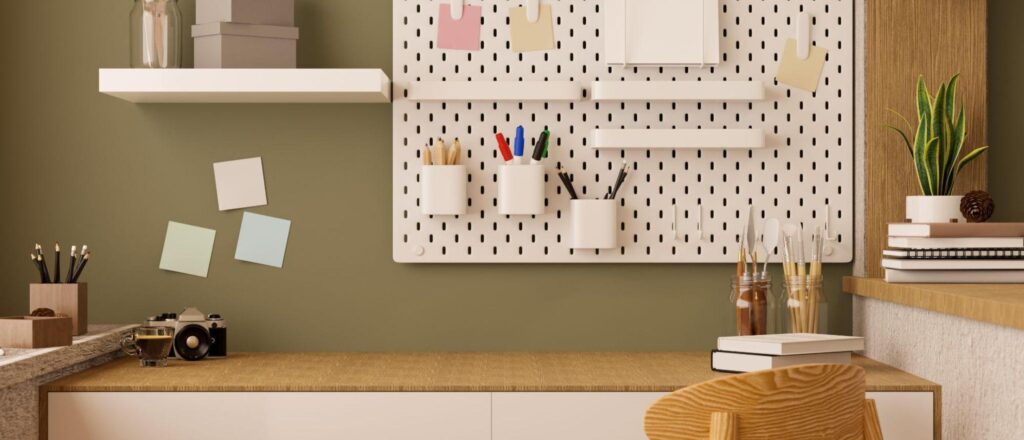
Location proves critical for command center effectiveness. Position this zone near the point of entry used most frequently by family members, ensuring daily interaction with the system. This placement facilitates the critical habit of immediately capturing information rather than setting items down “temporarily” where they’re likely to be forgotten.
2. Drop Zones That Get Used
Intentional entry areas dramatically reduce the clothing, backpack, and shoe chaos that typically spreads throughout family homes. These transitions between the outside world and the home interior require thoughtful design to function effectively.
The most successful drop zones include personalized storage for each family member rather than communal spaces where items become jumbled. Individual cubbies, hooks, or lockers create both physical organization and psychological ownership that increases system participation.
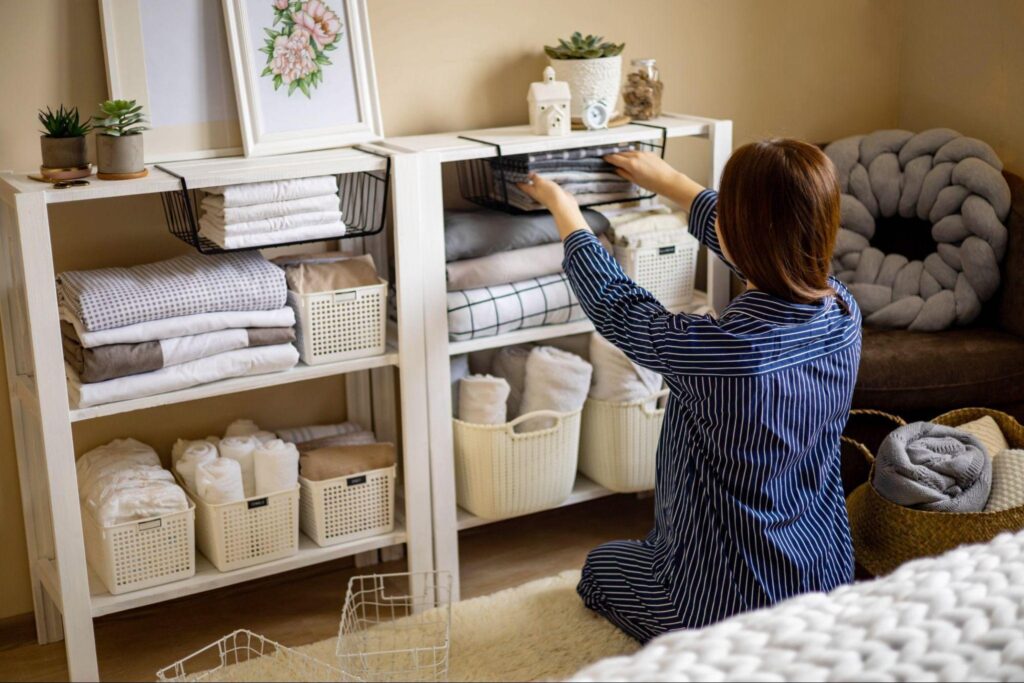
Scale these elements appropriately for different ages, with lower hooks and open storage for younger children and more complex systems for teens and adults. This age-appropriate design enables independence at every developmental stage, reducing parent intervention requirements for daily organization.
Consider seasonal flexibility in your drop zone design. Systems that accommodate both bulky winter gear and minimal summer items prevent seasonal overflow that compromises organization. Removable elements, adjustable heights, and convertible components create adaptability as both seasons and family needs evolve.
3. Multifunctional Spaces That Evolve
The most successful family homes incorporate flexible spaces that transform as needs change rather than single-purpose rooms that quickly become obsolete. This adaptability accommodates growing children and shifting family dynamics without requiring constant renovation.

Play areas that convert to study spaces represent one of the most valuable multifunctional designs. Initial open floor space for building blocks and imaginative play gradually transitions to desk space for homework and projects as children grow. Thoughtful storage systems supporting this evolution accommodate everything from bulky toys to school supplies within the same footprint.
Furniture selection dramatically impacts multifunctionality. Pieces with multiple potential configurations – sectionals that separate, tables that expand, storage ottomans serving as seating – provide adaptation without replacement as family activities evolve. These versatile elements allow spaces to serve different purposes throughout the day and years of family development.
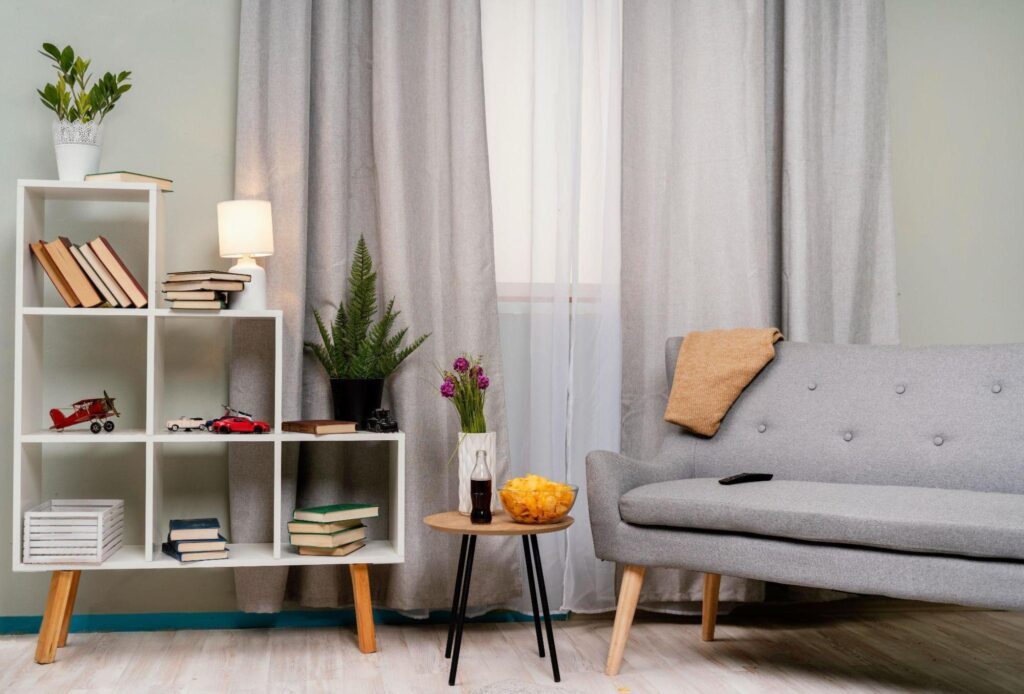
Consider acoustic and visual separation strategies that don’t require permanent walls. Movable barriers like bookcases, sliding panels, or ceiling-mounted curtain systems divide spaces temporarily when needed while maintaining connection during family time. This flexibility accommodates both togetherness and the increasing privacy needs of growing children.
4. Kitchen Design That Promotes Togetherness
The family kitchen serves as command central for daily life, requiring a thoughtful design that accommodates multiple users and activities simultaneously. The most successful family kitchens balance efficient work zones with social spaces that encourage connection.
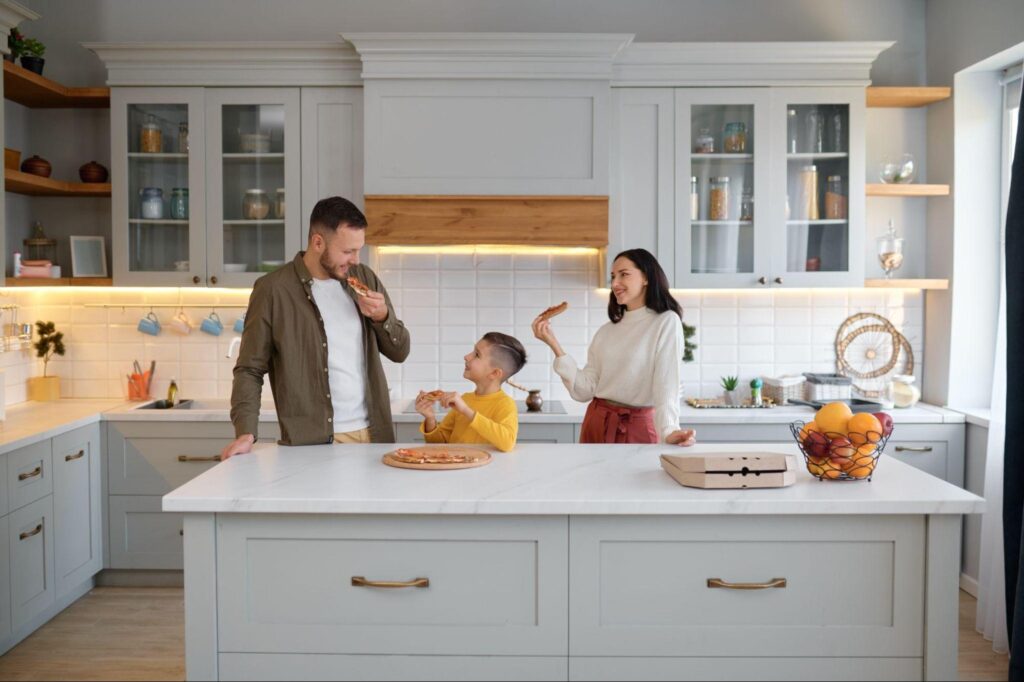
Counter-height variations create zones appropriate for different ages and activities. Standard-height surfaces serve adult cooking needs, while lower counter sections allow children to participate safely in food preparation. Bar-height areas provide homework supervision space separate from food preparation zones, enabling parental oversight during busy dinner preparation.
Traffic flow planning prevents bottlenecks during peak usage times. Multiple access points to high-use elements like refrigerators and pantries prevent congestion, while dedicated pathways through the space allow movement without disrupting ongoing activities. This thoughtful circulation design accommodates the reality of multiple family members using the kitchen simultaneously.
Storage accessibility enables independence appropriate to different developmental stages. Lower drawers containing child-safe items allow the youngest family members to help themselves, while higher storage secures items requiring adult supervision. These deliberate height allocations grow with children while maintaining necessary safety boundaries.
5. Outdoor Spaces That Expand Living Areas
Functional outdoor areas effectively expand usable living space while providing crucial nature connection that benefits family well-being. The most successful family yards balance structured activity zones with flexible spaces that adapt to changing interests.
All-ages design accommodates different developmental stages simultaneously. Rather than creating isolated “kid zones,” integrate elements appealing to various ages within shared spaces. Seating areas positioned adjacent to play spaces allow adult supervision without constant hovering, while activity areas that evolve from toddler play to teen socialization provide long-term value.
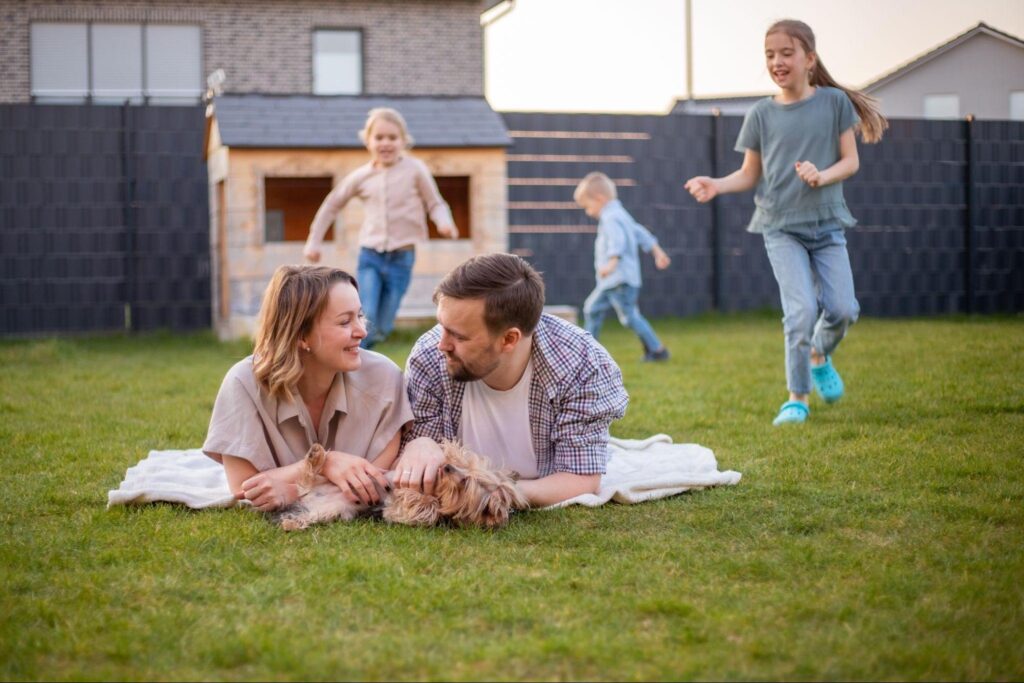
Consider maintenance requirements honestly when developing outdoor family spaces. Low-maintenance materials and plantings ensure these areas remain enjoyable rather than becoming obligation sources. Surfaces that withstand heavy use without requiring constant attention – composite decking, artificial turf in high-traffic areas, or native plantings requiring minimal care – allow outdoor enjoyment without adding significant family workload.
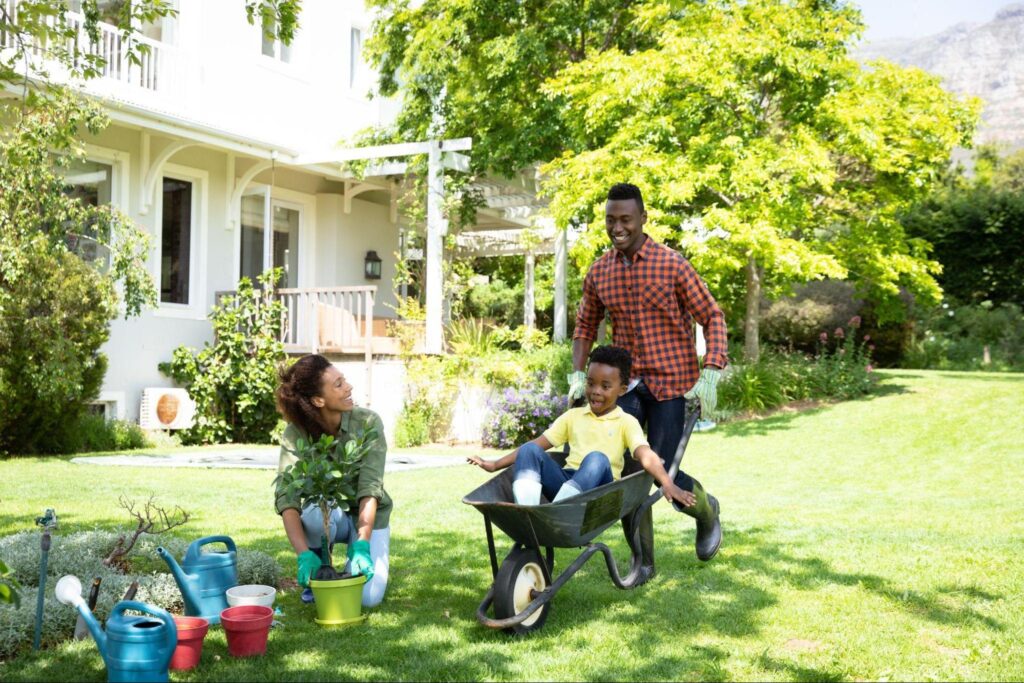
Indoor-outdoor connections maximize the usability of these spaces. Visual links through substantial windows maintain supervision possibilities, while physical connections via French doors or sliding systems encourage frequent outdoor use. These deliberate connections transform yards from occasional destinations to integral living spaces used daily.
The most successful family homes balance practical functionality with spaces that nurture connection. These foundational elements create environments where daily tasks flow smoothly while still accommodating the joyful unpredictability of family life. By focusing on adaptable systems rather than rigid structures, these homes evolve alongside the families they shelter, providing supportive environments through all stages of family development.

Hi, I’m Christian, a 43-year-old father of two and a lifelong DIY enthusiast. My workshop is where I spend countless hours experimenting, upgrading, and fine-tuning. Sharing my experiences and practical advice is my way of helping others create homes they love.




